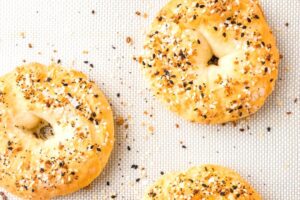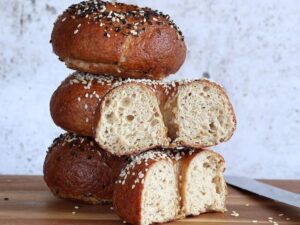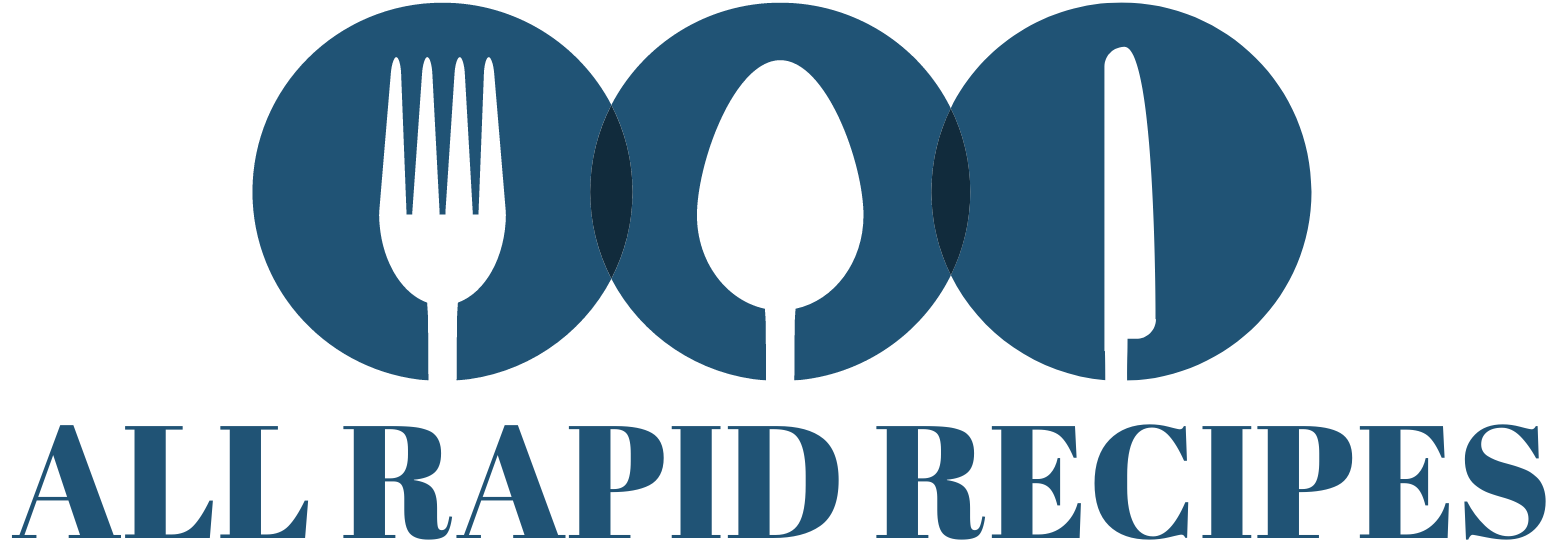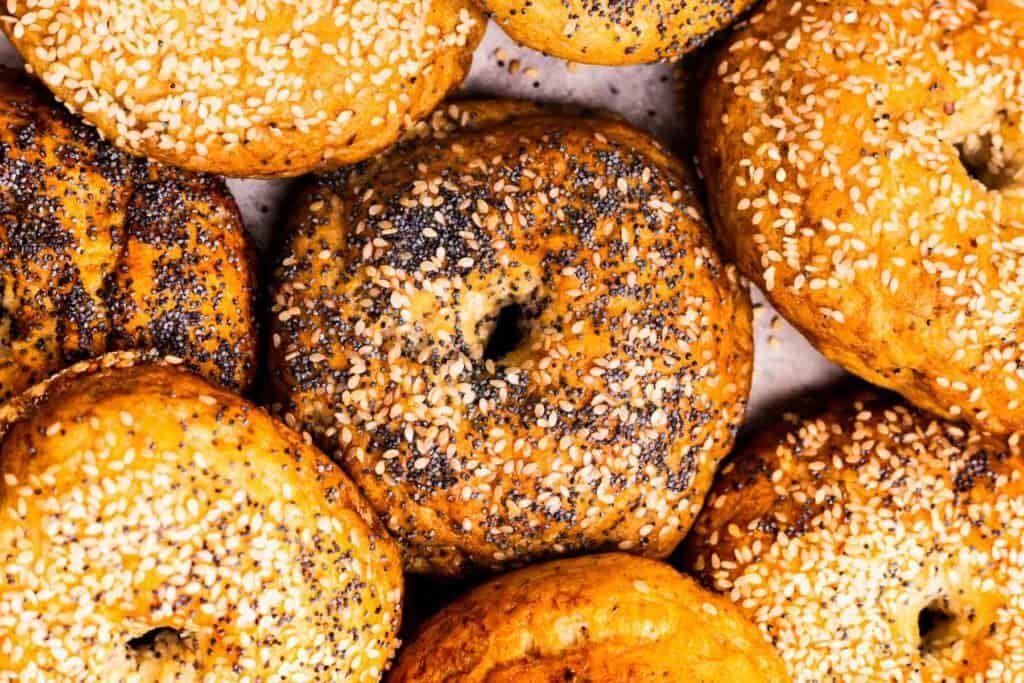Introduction
A Personal Connection to Gluten-Free Bagels
Imagine waking up on a weekend morning, craving the comforting chew of a freshly toasted bagel, but there’s a catch—you can’t eat gluten. For many, this scenario is a reality. Whether due to celiac disease, gluten sensitivity, or personal dietary choices, finding a delicious gluten-free bagel that doesn’t feel like a dry, crumbly substitute can be a challenge. But here’s the good news: gluten-free bagels have come a long way.
In this guide, you’ll discover everything about gluten-free bagels—from the best recipes to the top store-bought brands and expert baking tips. By the end, you’ll have all the knowledge needed to enjoy bagels without the gluten, but with all the taste.

Why Gluten-Free Bagels Are Growing in Popularity
- Health-conscious choices: More people are cutting gluten due to allergies, digestive issues, or personal health goals.
- Improved alternatives: Brands and bakers are constantly innovating to create better-tasting, fluffier gluten-free bagels.
- Expanding availability: Grocery stores, specialty bakeries, and online shops now stock a wide range of gluten-free options.
What Are Gluten-Free Bagels?
Understanding the Basics
Gluten-free bagels replace traditional wheat flour with alternatives like almond flour, rice flour, and tapioca starch. Since gluten provides elasticity and chewiness, gluten-free versions require additional binding agents like xanthan gum or psyllium husk to replicate the texture of regular bagels.
Are Gluten-Free Bagels Healthier?
| Type | Calories | Carbs | Fiber | Protein |
|---|---|---|---|---|
| Regular Bagel | ~280 | 56g | 2g | 10g |
| Gluten-Free Bagel | ~250 | 48g | 3-5g | 8g |
While gluten-free bagels can be slightly lower in calories and carbs, the nutritional value largely depends on the ingredients used.
How to Make Homemade Gluten-Free Bagels
Essential Ingredients & Substitutes
| Ingredient | Purpose | Substitutes |
| Gluten-Free Flour | Structure | Almond flour, oat flour |
| Xanthan Gum | Binds ingredients | Psyllium husk, guar gum |
| Yeast | Helps dough rise | Baking powder (for quick versions) |
| Eggs | Adds moisture | Flax eggs (for vegan version) |
| Honey/Sugar | Feeds the yeast | Maple syrup, coconut sugar |
Step-by-Step Instructions
- Mix the Dough: Combine gluten-free flour, xanthan gum, and yeast with warm water and a touch of sweetener.
- Knead & Shape: Form into classic bagel rings.
- Boil for Texture: A quick boil in water with honey or baking soda enhances chewiness.
- Bake to Perfection: Golden brown and crisp on the outside.
- Cool & Enjoy: Allow bagels to cool before slicing for the best texture.
Tips for the Perfect Gluten-Free Bagel
- Use a high-quality gluten-free flour blend.
- Don’t skip the boiling step—it ensures a chewy texture.
- Add toppings like sesame seeds, poppy seeds, or everything seasoning before baking.
The Best Store-Bought Gluten-Free Bagels
Top Brands & Features
| Brand | Texture & Taste | Price | Availability |
| Canyon Bakehouse | Soft, slightly chewy | $$ | Widely available |
| Udi’s | Light, airy | $$ | Grocery stores & online |
| Against the Grain | Crisp outside, chewy inside | $$$ | Specialty stores |
What to Look for in a Store-Bought Gluten-Free Bagel
- Ingredients: Avoid artificial additives and excessive sugar.
- Texture: The best gluten-free bagels should be slightly chewy, not dry.
- Nutritional Value: Higher fiber and protein content is preferable.
Gluten-Free Bagel Variations & Toppings
Popular Flavor Variations
- Everything Bagel: A mix of garlic, onion, sesame, and poppy seeds.
- Cinnamon Raisin: Slightly sweet, perfect for breakfast.
- Cheddar & Jalapeño: A spicy, cheesy twist.
Best Toppings for Gluten-Free Bagels
- Classic: Cream cheese, butter, peanut butter.
- Savory: Avocado, smoked salmon, hummus.
- Sweet: Nutella, jam, honey.
Gluten-Free Bagels in a Balanced Diet
Are Gluten-Free Bagels Good for Weight Loss?
While gluten-free bagels may be slightly lower in calories, they are still a carbohydrate-heavy option. Choosing a whole-grain or high-fiber variety can make them a better choice for weight management.
Best Ways to Incorporate Them into Your Diet
- Use them for sandwiches or mini pizzas.
- Pair with high-protein spreads like almond butter or cottage cheese.

FAQs About Gluten-Free Bagels
What are gluten-free bagels made of?
Gluten-free bagels use alternative flours like rice flour, almond flour, or tapioca starch instead of wheat.
Are gluten-free bagels healthier than regular bagels?
It depends on the ingredients—some are higher in fiber and protein, while others contain more sugar.
How can I make gluten-free bagels less dense?
Using the right flour blend and activating yeast properly helps create a lighter texture.
Can I freeze gluten-free bagels?
Yes! Store them in an waterproof sack and solidify for up to 3 months.
What’s the best gluten-free flour for bagels?
A blend of rice flour, tapioca starch, and xanthan gum works best for achieving a chewy texture.
Conclusion
Gluten-free bagels are no longer a compromise—they’re a delicious alternative for anyone avoiding gluten. Whether you bake your own or opt for a store-bought brand, you can enjoy bagels without sacrificing taste or texture. Try different toppings, experiment with flavors, and find your perfect gluten-free bagel experience!

